 Official websites use .gov
A .gov website belongs to an official government organization in the United States. Official websites use .gov
A .gov website belongs to an official government organization in the United States. |
 Secure .gov websites use HTTPS
A lock or https:// means you’ve safely connected to the .gov website. Share sensitive information only on official, secure websites. Secure .gov websites use HTTPS
A lock or https:// means you’ve safely connected to the .gov website. Share sensitive information only on official, secure websites. |
Solutions today for reefs tomorrow
Stony coral tissue loss disease (SCTLD) is a highly lethal coral disease that was first reported off the coast of Florida in 2014 and has since spread rapidly throughout the Caribbean. The disease affects over 20 coral species and is now present on reefs in 18 countries and territories. The large geographic scale of this outbreak, high lethality of the disease lesion, and broad susceptibility among coral species make SCTLD unprecedented in its ecological impact, and likely make it the most deadly coral disease outbreak in history.
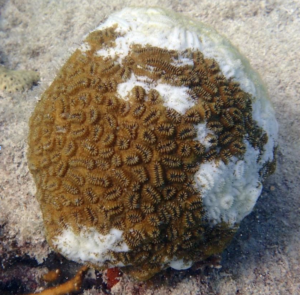
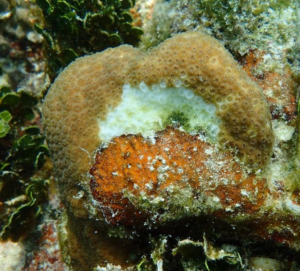
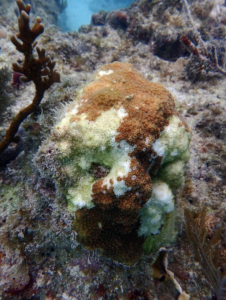
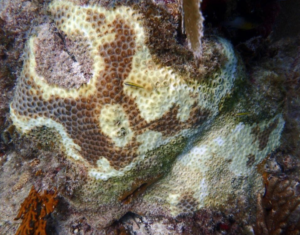
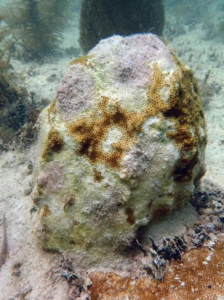
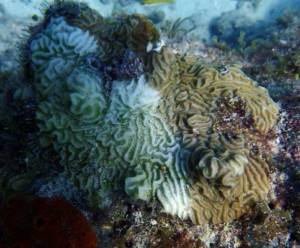
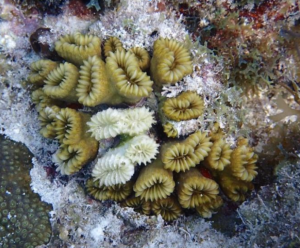
Stony coral tissue loss disease lesions appear as distinct and rapidly expanding focal, multi-focal, or coalescing areas of denuded (bare) skeleton, which can originate in the base, periphery, or center of the colony. Lesions can be highly variable between individuals of the same species.
Once a lesion develops, tissue loss can continue across the surface of the coral colony at a rate of 5 to 40 cm2 per day until no living tissue remains. In some species, most notably in Monstastrea cavernosa, the margin of tissue loss can be preceded by a region of bleached or discolored tissue varying in thickness (~1 to 4 inches wide).
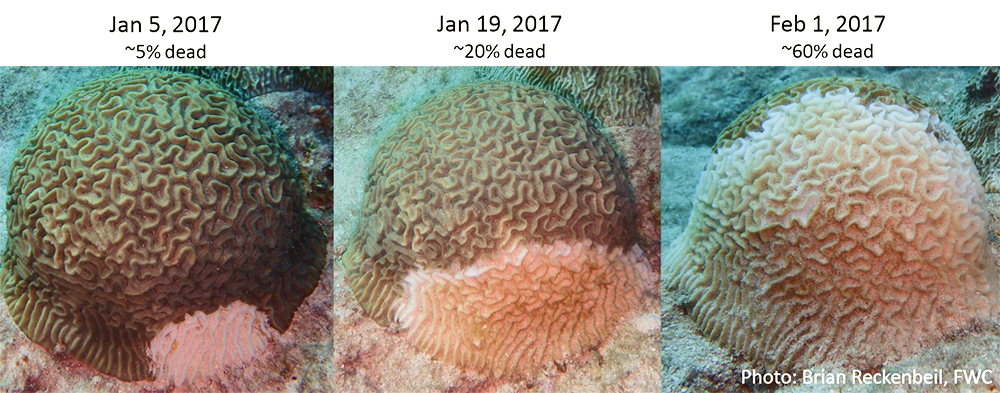
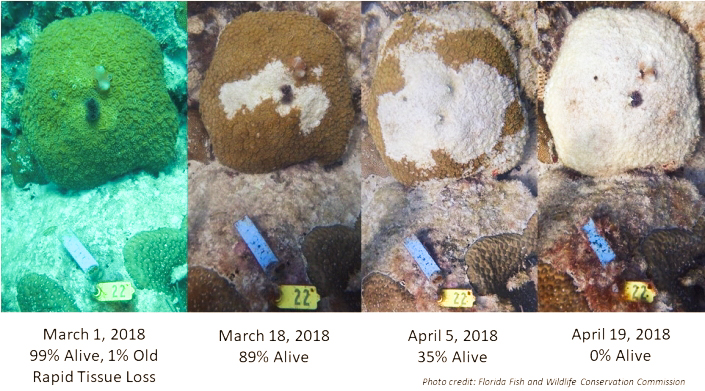






SCTLD has now been reported to affect over 20 species of Caribbean stony corals. At the time of writing, SCTLD remains active and spreading, and has been reported throughout the entirety of the Florida Reef Tract, and continues to spread throughout the Caribbean. Hydrodynamic and epidemiological models suggest that SCTLD may spread between reefs via neutrally buoyant particles carried in prevailing water currents, though the exact agent of transmission is still unknown. SCTLD appears to be more prevalent on reefs in cooler months and suppressed in summer months. Once the disease is established in a location, SCTLD can remain present within a reef community for multiple years.
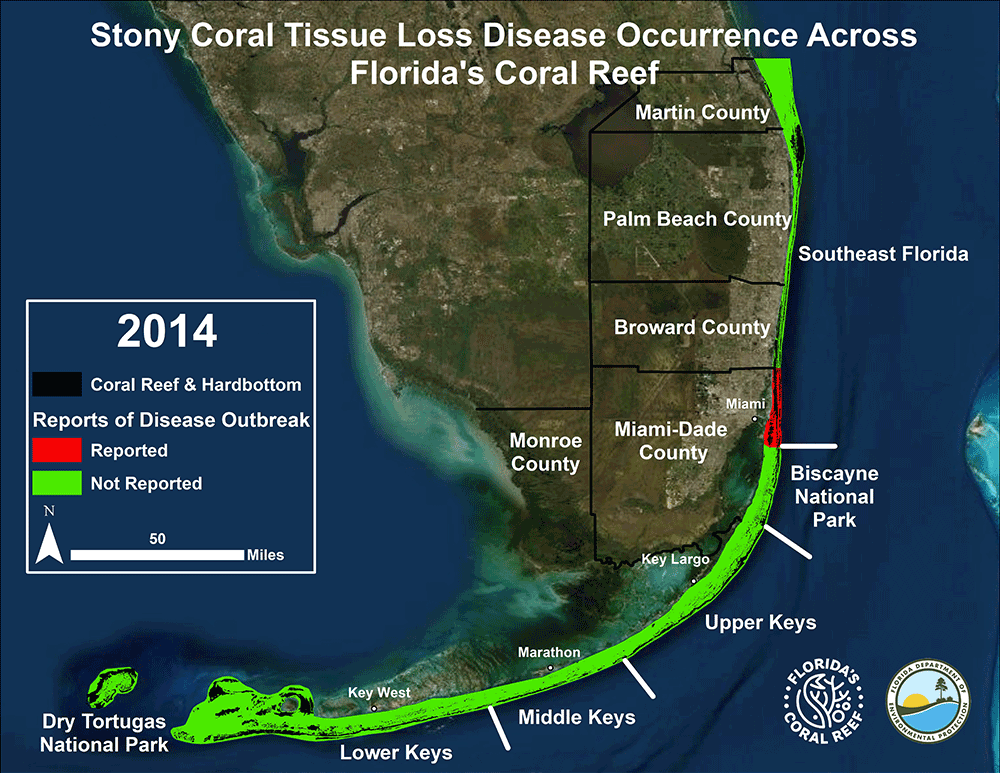
For more up-to-date information about SCTLD occurrence by region or to report an observation of SCTLD on your reef, please visit the Atlantic and Gulf Rapid Reef Assessment website or fill out their reef watch survey here.
Boulder Brain Coral
Pillar Coral
Elliptical Star Coral
Grooved Brain Coral
Smooth Flower Coral
Maze Coral
Symmetrical Brain Coral
Knobby Brain Coral
Mountainous Star Coral
Boulder Star Coral
Large-Cup Star Coral
Smooth Star Coral
Blushing Star Coral
Starlet Coral
Download printable field diagnostic cards of SCTLD lesions on common Caribbean stony coral species here.
The cause of STLD is an area of active research. Studies have found the disease to be transmissible between individual corals and between species via direct contact and via a waterborne agent. This, coupled with successful treatment with antibiotics and it’s clustered distribution as it spreads throughout the Caribbean, suggests that some communicable agent is contributing to SCTLD infections, although whether as a primary or a secondary pathogen remains unclear.
At the time of writing, the precise cause of SCTLD remains unknown. There is no histological evidence of bacterial communities consistently associated with diseased tissues; however, microbiological data suggests the potential involvement of the bacterial group Rhodobacterales. Early evidence from transmission electron microscopy has also detected the presence of wide-spread viral particles present in the chloroplasts of the algal endosymbionts, which may be contributing to the disease, though further work is needed to confirm their involvement in SCTLD pathology.
Early histological studies of SCTLD have identified cellular lesions of lytic (described as the complete dissolution of tissues into a viscous, fluid-like mass) and coagulative (nuclear material is degraded but the tissue architecture is maintained) necrosis as the diagnostic signature of this disease, which appear to be most heavily concentrated in deeper tissue layers (the basal body wall and oral gastrodermis).
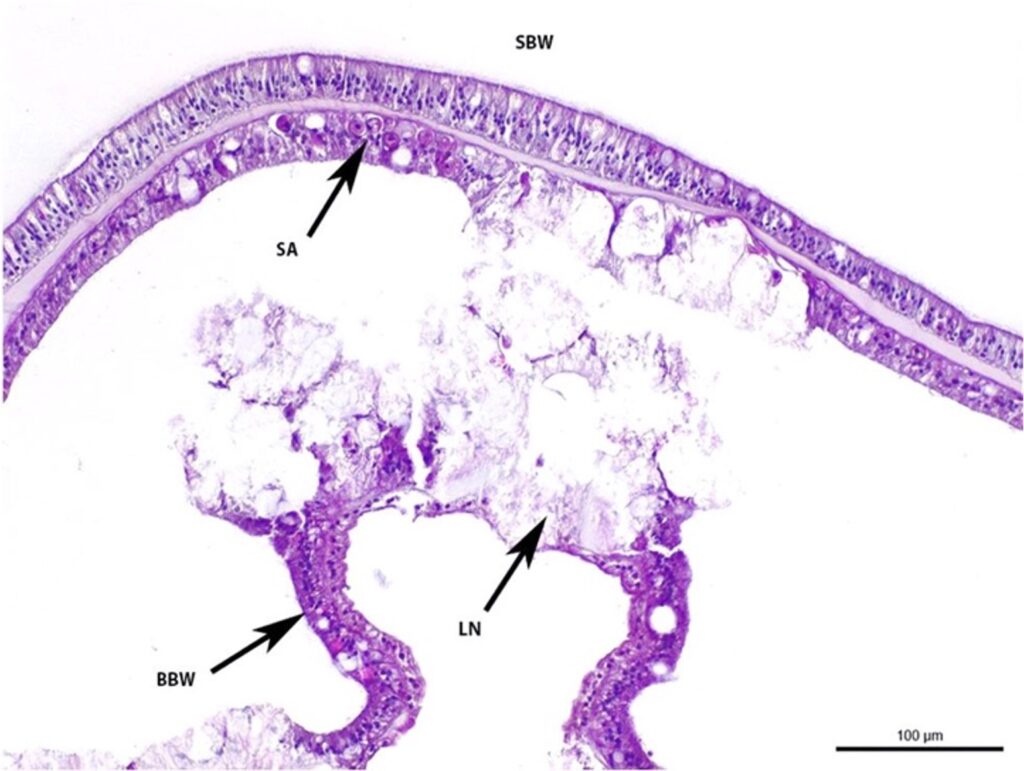
In the oral gastrodermis, the algal endosymbionts appear to be the first bodies affected by the disease and can exhibit signs of degradation such as vacuolization, discoloration, swelling, pallor with nuclear loss (“ghosting”), and necrosis. Portions of the gastrodermis with affected endosymbionts also often display excessive vacuolization, cell swelling, and detachment from the mesoglea.
The CDHC is a network of scientists, managers, and agency representatives devoted to understanding coral health and disease.
Funding support provided by NOAA CRCP
Web hosting by NOAA NCCOS
Coral Disease and Health Consortium
Hollings Marine Laboratory
331 Fort Johnson Road
Charleston, SC 29412 USA
Email: cdhc.coral@noaa.gov